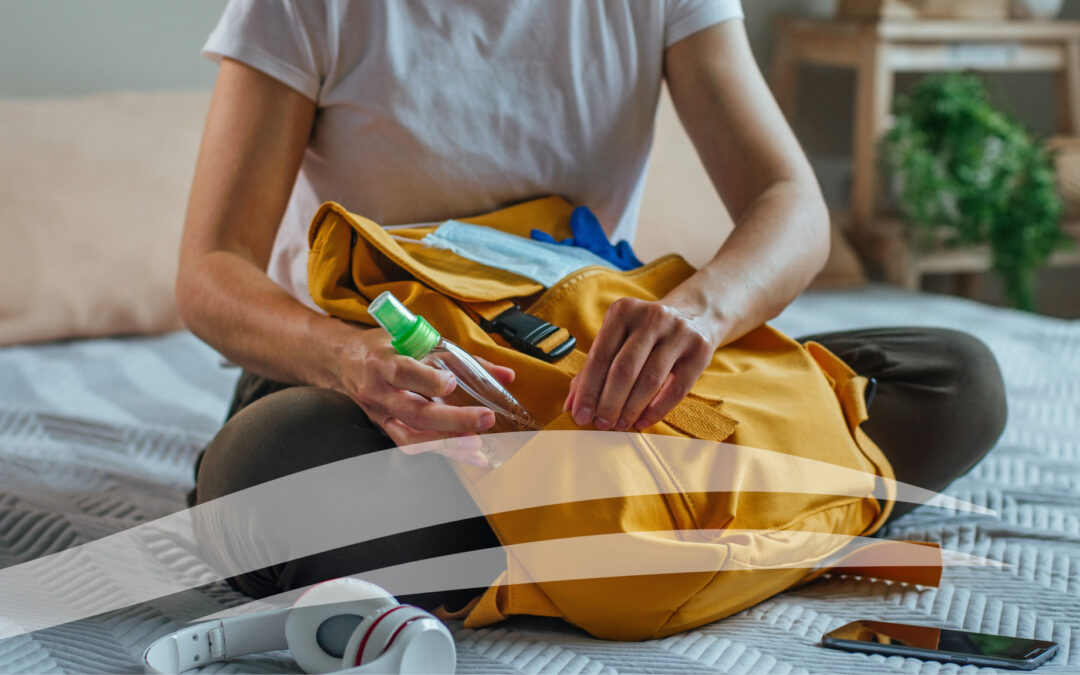Most households have first aid kits, an abundance of bandaids, and a few other items on hand in the event of a trip and fall accident or other injuries. But they won’t likely have items to aid in the event of a knocked-out tooth or another dental injury. A dental emergency kit is a perfect solution to help provide quick relief in an emergency. They’re convenient, cost-effective, and can provide much-needed peace of mind. So what should you have in your dental emergency kit? Read on to find out.
What should you have in your at-home dental emergency kit?
The truth is that accidents can happen at any time. The most common home-accident-related injuries are falls, burns, cuts and bruises, accidental inhalation or consumption of a hazardous item (poisoning), and choking. For many of these injuries, the items in your household first aid kit can come to the rescue. Bandages and antiseptic spray are on hand to treat those cuts and bruises, and ipecac syrup may be on hand to help if something shouldn’t have been ingested, and burn spray can be applied to a burn.
But what items should you have on hand for a tooth injury, such as a chipped tooth or oral bleeding? And when should you forego the dental emergency kit and head straight to your dentist in Middletown, Ohio? We’ve got the answers below.
1. Latex Gloves
Latex gloves are essential to protect the injured person and whoever provides medical aid. Gloves help provide a barrier to prevent the spread of infection and disease and promote good infection control by preventing the transfer of bacteria or other microorganisms.
2. Over-the Counter Pain Reliever
Though these items don’t necessarily need to be stored with your dental emergency kit, having some over-the-counter pain relievers on hand is always recommended. At least, acetaminophen, ibuprofen, and aspirin. Acetaminophen (Tylenol) relieves fever, headaches, and other common aches and pains. Ibuprofen (Advil) is a nonsteroidal anti-inflammatory drug (NSAID) that can help reduce inflammation, swelling, stiffness, and joint pain. Keep these items in a safe place in your home, out of reach of children, and pay attention to the expiration date.
3. Gauze
Gauze is essential in your dental emergency kit because it can help control bleeding, absorb excess fluids, and provide comfort.
4. Bright Flashlight
When you have suffered a tooth injury, sometimes it can be difficult to see the damage that was done. A bright flashlight with functional batteries can ensure you can see even the furthest back areas of the mouth. This visual information can also help you better let the emergency dentist know what is happening in the event you need to place a call.
5. Spare Toothbrush, Floss, and Orthodontic Wax
It’s always a good idea to keep some spare toothbrushes on hand. Perhaps you have an overnight guest who needs to brush their teeth in the morning. Or, perhaps your child has been sick, and it is best to have them use a new toothbrush that oral bacteria haven’t yet attacked. But having spare toothbrushes and floss in your emergency kit can also help in the event of a toothache. Many toothaches are caused by food particles lodged between the teeth and gums.
Orthodontic wax is also good to have on hand in case of discomfort and irritation caused by orthodontic appliances rubbing against the cheeks, lips, or tongue. But this wax can also help with broken wires, brackets, or rough edges that must be addressed at your child’s next orthodontic appointment.
6. Small Container for a Dislodged Tooth
Over 3 million teeth are knocked out (avulsed) every year. This can be due to sports injuries, accidents, physical assault, decay, gum disease, and hereditary factors. And if it happens to you or your child, preserving the tooth for the dentist is critical. Knowing what to do with the knocked-out tooth can help improve the chances that the tooth can be reinserted. So, be sure to have a small sealable container to hold the tooth and some saliva or milk to preserve it for the dentist.
7. Dry Tea Bags
Did you know tea bags are an excellent remedy for post wisdom tooth extraction swelling and bleeding? It’s true! And, having some dry tea bags in your dental emergency kit can help in the event of a tooth injury that has resulted in bleeding. Tea bags can help form a blood clot which will also help protect the bone while your wound heals.
8. Clove Oil
Clove oil is a lesser-known natural remedy used for centuries to alleviate tooth pain and discomfort. Clove oil in a dental emergency kit can temporarily relieve dental pain and discomfort until professional dental care can be obtained. It is anti-inflammatory and anti-bacterial. To use clove oil for a toothache, dip a cotton ball or clean tissue into the oil and wipe it over the gums at the pain point.
What to do in the event of a dental emergency.
Though your dental emergency kit can help in the event of a toothache and dental emergency, there are some situations where a visit to the emergency dentist is in order. If you or your child are experiencing the following, contact your emergency dentist for the next steps.
- Knocked-out tooth
- Cracked or chipped tooth
- Abscessed tooth
- Orthodontic emergency resulting in open wounds, excessive bleeding, or significant irritation
Due for a professional dental cleaning? Contact Dr. Steven A. Lang, DDS
Whether you have questions about the items in your emergency dental kit or are overdue for professional dental cleaning, now is the time to request an appointment with Dr. Steven A. Lang, DDS. We look forward to hearing from you and talking about how you can reduce your risk of dental emergencies at home. And to that end, be sure to have our contact information in a handy place at home if you need immediate assistance or dental care.

